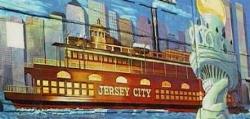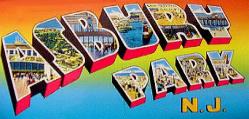 |  |  |
|
| ||
 |  |  |
 |  |  |
|
| ||
 |  |  |
|
|
George H. Cook,
STATE GEOLOGIST.
Edited by GET NJ
Copyright 2003
"Samuel Holland and Charles
Morris, Esquires, two of the members of the Court not Concurring in a part
of the foregoing determination, viz., That part respecting the
Station at Hudson's River, desired to have their Reasons for such their
Dissent entered on the Minutes of our Proceedings, which was allowed and
they are as follows:
"The Northern Boundary of the Province of New Jersey,
is the matter Submitted to bur Consideration and to Ascertain the
Extremities of the Partition Line upon Hudson's and Delaware Rivers.
"In
doing this We are to proceed upon Principles of Justice and Equity, having
respect to the Proofs. This we apprehend to be [the] Language and Intent
of [our] Commission and It is necessary It should be so because the
Country was but little known at the Time The Grants to the Duke of York
were made, and We must of necessity have recourse to the ancient Maps
which were in being at Time of making these Grants.
"It is difficult to
ascertain with precision what Lands passed to the Duke of York by his
Grant, Either from the Express Words of the Grant or by any Maps of the
Country that appear to us to have been then extant. Nor is it probable
that the Duke or his Grantees were better Informed when He Conveyed New
Jersey to Berkley and Carteret; the best Lights We have on this Matter are
the Maps of Vischer.
"The words relative to the Latitude in the Grants to
Berkley and Carteret, are words of Description concerning the Northernmost
Branch of Delaware, and We do not find upon Inquiry any Branch in the
Latitude mentioned. A Branch nevertheless Seems to be Intended. The Branch
nigh to that Latitude is Mahackamack and which, from a view of this
Ancient Map we are Induced to believe was the North Partition point
intended by the Parties, and think in Justice and Equity ought to be so
determined, becausesa Line from Hudson's River to the Branch at Eas. ton,
claimed on the part of New York, or to that of the Poughpaxtonk and Mohawk
Branches claimed by New Jersey, would Involve many of his Majesty's
subjects in Absolute Ruin who hold respectively under Each Government.
"It is therefore upon this principle The Point on Hudson's River we
apprehend ought also to be fixed, for as It appears by Vischer's Map that
the Latitude of forty-one on Hudson's River, which Map We apprehend was
the Guide and direction to the Duke in foiming his Grants to Berkley and
Carteret. This Map, ascertains the Latitude of fortyone on the upper part
of the Manhattan's Island.
"If the Country therefore was vacant we should
not Hesitate in Declaring that the Latitude of forty-one as laid down in
the Ancient Maps would in Equity be the Station on hudson's River, and
more Especially because We have had abundant Experience in our own
Departments to Observe that the Ancient Geographers find their Latitudes
in these parts of the Continent Several Miles more Southerly than they are
found to be by more modern Observations. In Tenderness therefore to the
New Jersey Settlers, We are Inclined to a more Northern Station and in
settling the place where, Consider that before the Contested Territory was
planted a Place due West of Frederick Phillips Mills gained the Reputation
as the Station Point upon Hudson's River, and a Line fiom this Station
which appears to be Anciently fixed by the Governments concerned will be
the Least detrimental to the Settlers, and one more Northerly will
Comprehend many Farms in a populous Neighborhood held under New York by
Ancient Patents. We Cannot help being of Opinion That a Line thence to the
Mahaokamack Branch will be the most Just and Equitable of any We can fix
upon agreeable to the design of the Royal Commission which We imagine will
be most Conformable to His Majesty's Gracious Intentions to His Subjects
in both Provinces.
Samuel Holland,
Charles Morris."
 Your Ancestors' Story |
 Bruce Springsteen's Jersey Shore Rock Haven! |

|
UrbanTimes.com |